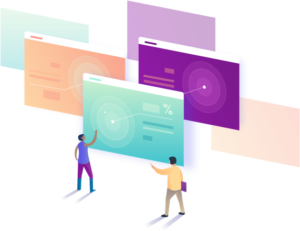Data-informed design: Getting started with UX analytics

What is UX analytics?
UX analytics is the measurement and analysis of user activity on a website or app that provides insights into how its design can be adapted to meet the current or changing needs of end users.
Measurement can be quantitative and/or qualitative. Quantitative data measures what users do, such as clicking on a particular link, while qualitative data measures why they do it. Both types of data are crucial for carrying out an effective UX analysis.
But data, and the insights it provides, are no substitute for design intuition. Data can inform that intuition but ultimately it’s up to you to draw conclusions and make design decisions based on your own experience and knowledge of the end user. Therein lies the benefit of UX analytics.
What are the benefits of UX analytics?
UX analytics allows you to test, confirm and develop design intuition through data. If your intuition tells you that users aren’t clicking on a particular button because of its color, you can test that intuition by leveraging UX analytics (such as an A/B test). Here are some other examples of how UX analytics supports data backed design intuition, according to Sitepoint:
- Find out where users are leaving and why
- Optimize the customer journey to reduce exit rates
- Rethink visual design to aid usability and accessibility
- Find out where and why the user is “rage clicking”
- Boost conversions and maximize sales
- Rearrange and tailor content to fit the user’s intentions
In the end, the benefit of UX analytics is that it enables you to build experiences that are based on how users are actually using your site or app rather than on how you think they are or should be. Creating a more seamless experience for users ultimately results in better business outcomes by making it as easy as possible for users to engage in the behaviors you want them to, such as signing up to a service or making a purchase.
What are some UX analytics tools?
There’s an abundance of tools out there to enable you to conduct UX analyses. What you use will really depend on your needs, goals and the size and scope of your business. Generally using a mix of tools can give you a more robust understanding of user journeys. Some tools, such as Mixpanel, allow integration with other UX tools so that data can easily be stored and analyzed on one platform.
Here are several examples of different types of UX analytics tools and the sort of data they’ll provide:
- Website usage analytics platforms, such as Mixpanel, provide robust tools to understand user behavior on your website. These platforms will often come with a suite of various tools to help you paint a vivid, data informed picture of user behavior.
- User flow maps provide a visual representation of user journeys so that you can easily see the paths that users take toward an event, such as making a purchase.
- Funnel analytics, such as Mixpanel, show you conversion rates at different points of the user journey so you can easily see where users might be dropping out.
- Heatmap analytics tools allow you to visualize at a glance which parts of a page are getting the most interaction by overlaying a color coded ‘heat’ gradient on web pages to indicate click activity.
- Real-time analytics tools allow you to see how users are interacting with your site in real-time. For example, these tools might tell you how many users are viewing a page at the present moment.
- Session recording tools allow you to go back and watch individual user sessions to gain insights into their behavior.
UX analysis best practices
Selecting the right tools for your analysis is only part of the process. While these tools will provide you with plenty of valuable user data, it won’t be any help to you unless you properly evaluate it. Here are a few best practices you should follow to help ensure that you’re considering all of the variables when evaluating your data.
- Consider user expectations. How do users expect to interact with your site or app? What’s the cultural context in which they’ve formed those expectations? As a designer, it’s important to leverage empathy and put yourself in the user’s shoes to critically assess how they expect to use your site against how you expect them to use it.
- Evaluate usability heuristics. A heuristic evaluation takes you through an established checklist of usability considerations. It’s a great way to apply tried and true methods to your analysis. Here are ten usability heuristics developed by leading computer scientist Jakob Nielsen.
- Analyze the number of steps in the user flow. Your user flow should provide as little resistance as possible for users to complete a given task. Examine each step in the flow and assess whether or not it’s really necessary or just impedes the user’s progress.
Evaluate the app structure. Where do features live on your app or website, and how easy is it for users to switch between them? For example, important features, like shopping carts, should be easily accessible no matter where the user goes.
Conclusion
Next time you use a popular app to order food, hail a ride-share, or book travel, take a moment to appreciate just how easy the experience was. Technology has provided immense convenience right in the palm of our hands. But design plays a crucial role in enabling that convenience. Leveraging UX analytics to inform design ensures that your customers will continue to use your app and love their experience with it.


